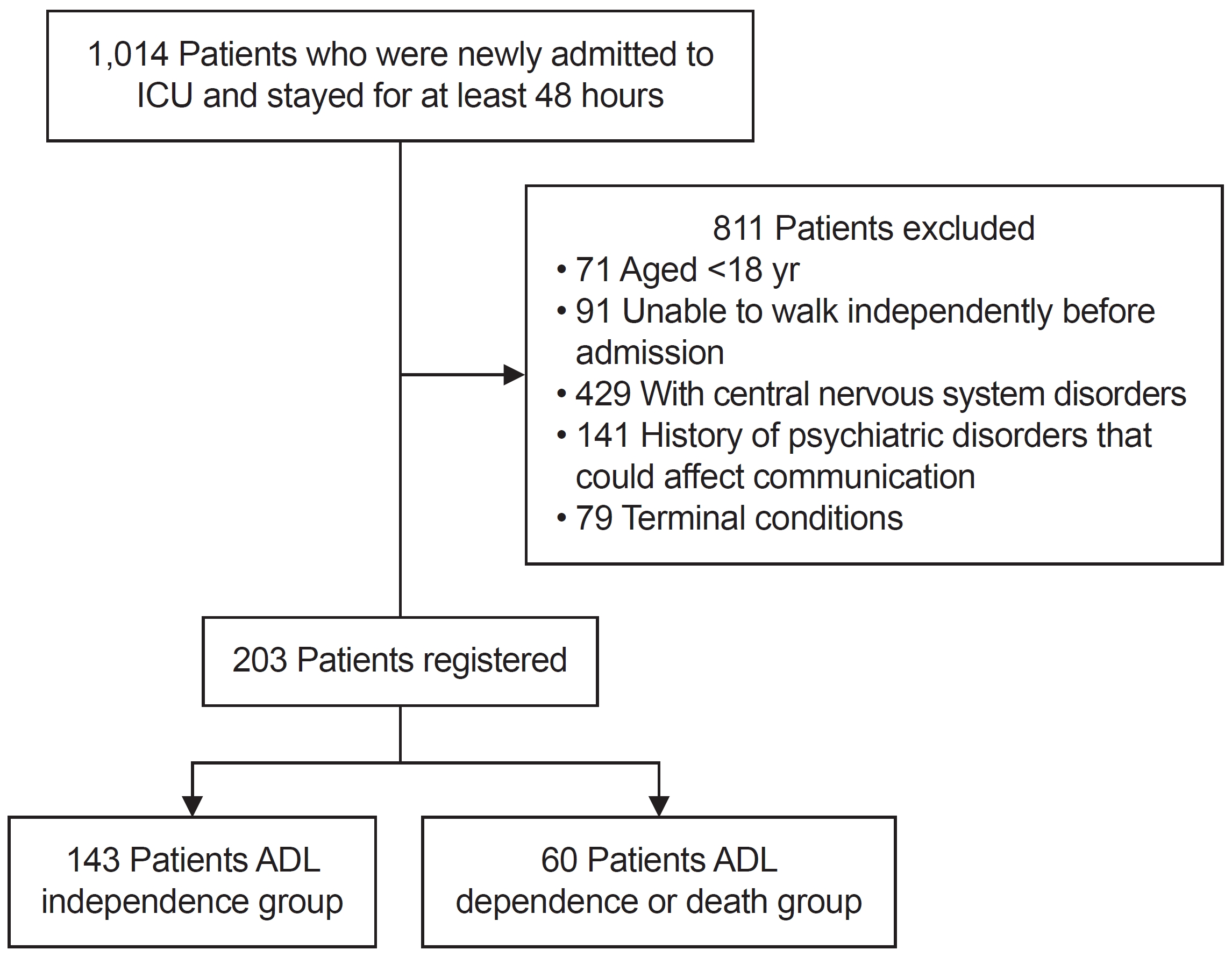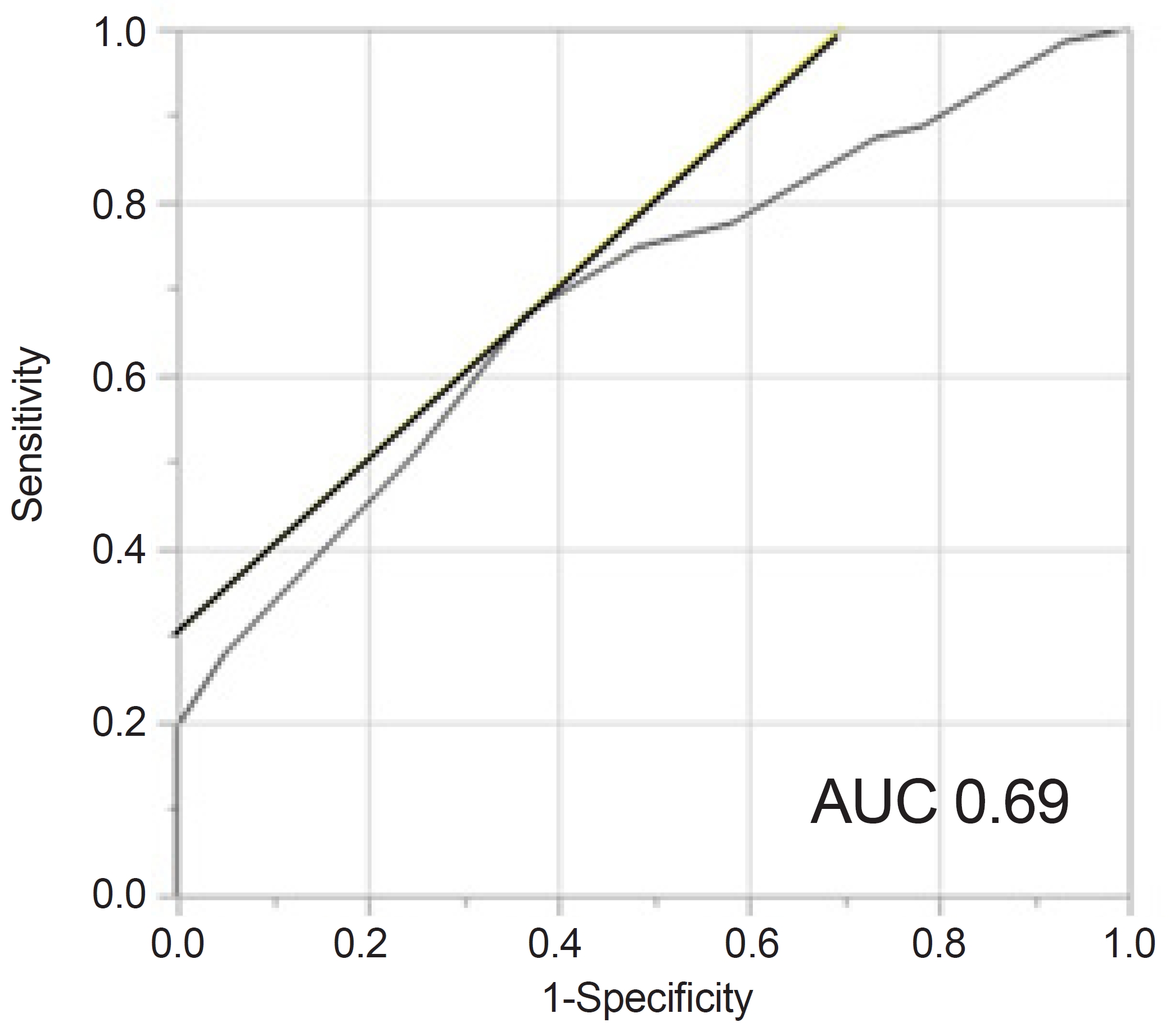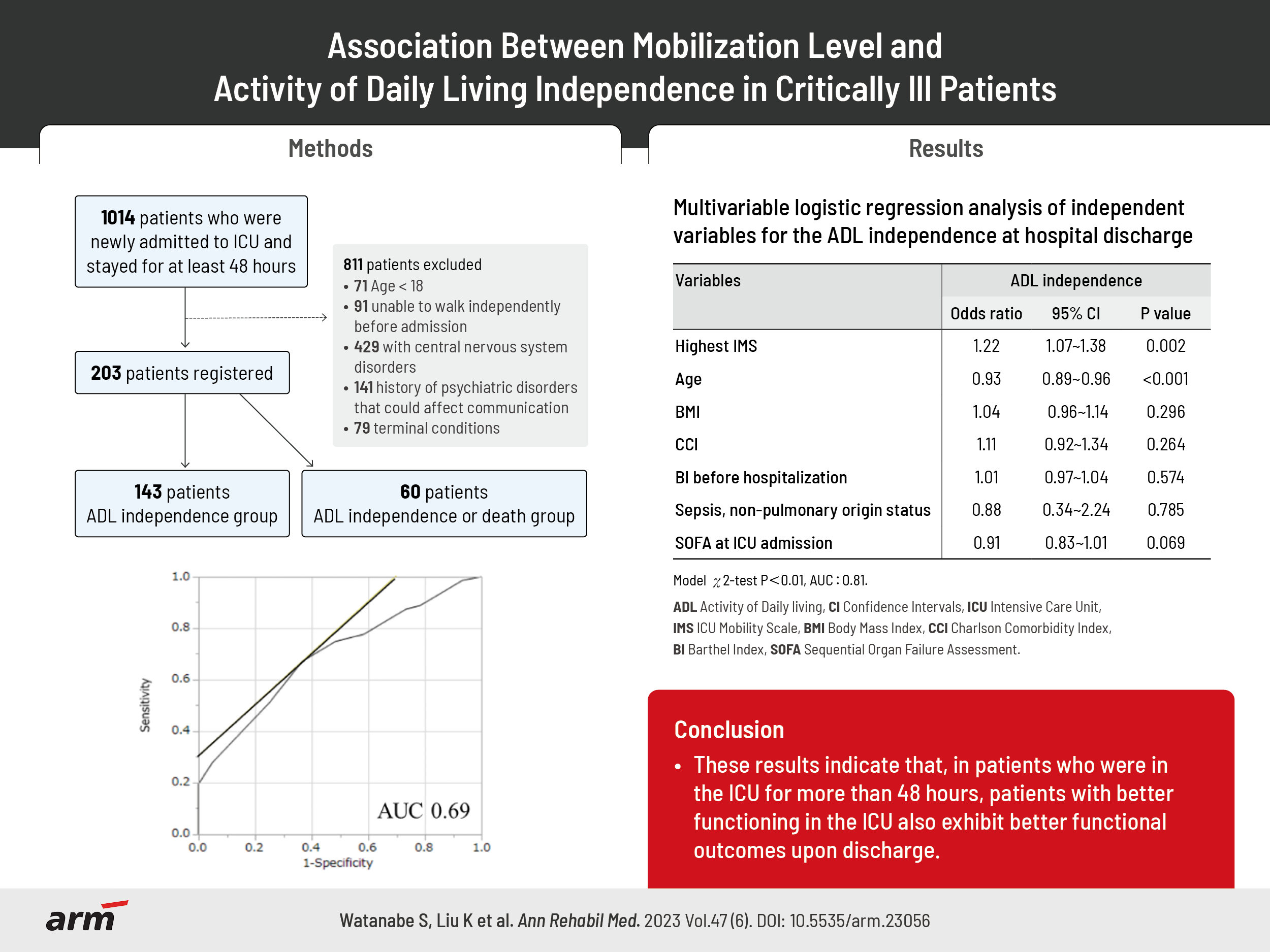- Search
| Ann Rehabil Med > Volume 47(6); 2023 > Article |
|
Abstract
Objective
Methods
Results
AUTHOR CONTRIBUTION
Conceptualization: Watanabe S, Liu K. Methodology: Watanabe S, Liu K. Formal analysis: Watanabe S. Project administration: Morita Y. Visualization: Katsukawa H. Writing – original draft: Watanabe S. Writing – review and editing: Watanabe S, Liu K, Kozu R, Yasumura D, Yamauchi K, Katsukawa H, Suzuki K, Koike T, Morita Y. Approval of final manuscript: all authors.
ACKNOWLEDGMENTS
SUPPLEMENTARY MATERIALS
Supplementary Table S2.
Supplementary Table S4.
Supplementary Fig. S1.
Fig. 1.

Fig. 2.

Table 1.
Values are presented as median (IQR) or number (%).
ADL, activity of daily living; ICU, intensive care unit; APACHE II, Acute Physiology and Chronic Health Evaluation II; SOFA, Sequential Organ Failure Assessment; IMS, ICU mobility scale; EQ-5D-5L, EuroQol-5 Dimensions-5 Levels.
a)Barthel Index before hospitalization was scored at the time of ICU admission based on the information from the family or the patients if they were conscious.
b)Excluding fatal case.
Table 2.
Table 3.
ICU, intensive care unit; 95% CI, confidence interval; EQ-5D-5L, Euro Qol-5 Dimensionss-5 Levels.
a)The covariates in the multivariable analysis included age, body mass index, Charlson Comorbidity Index, Barthel Index before hospitalization, sepsis, non-pulmonary origin status, Sequential Organ Failure Assessment score at ICU admission.








